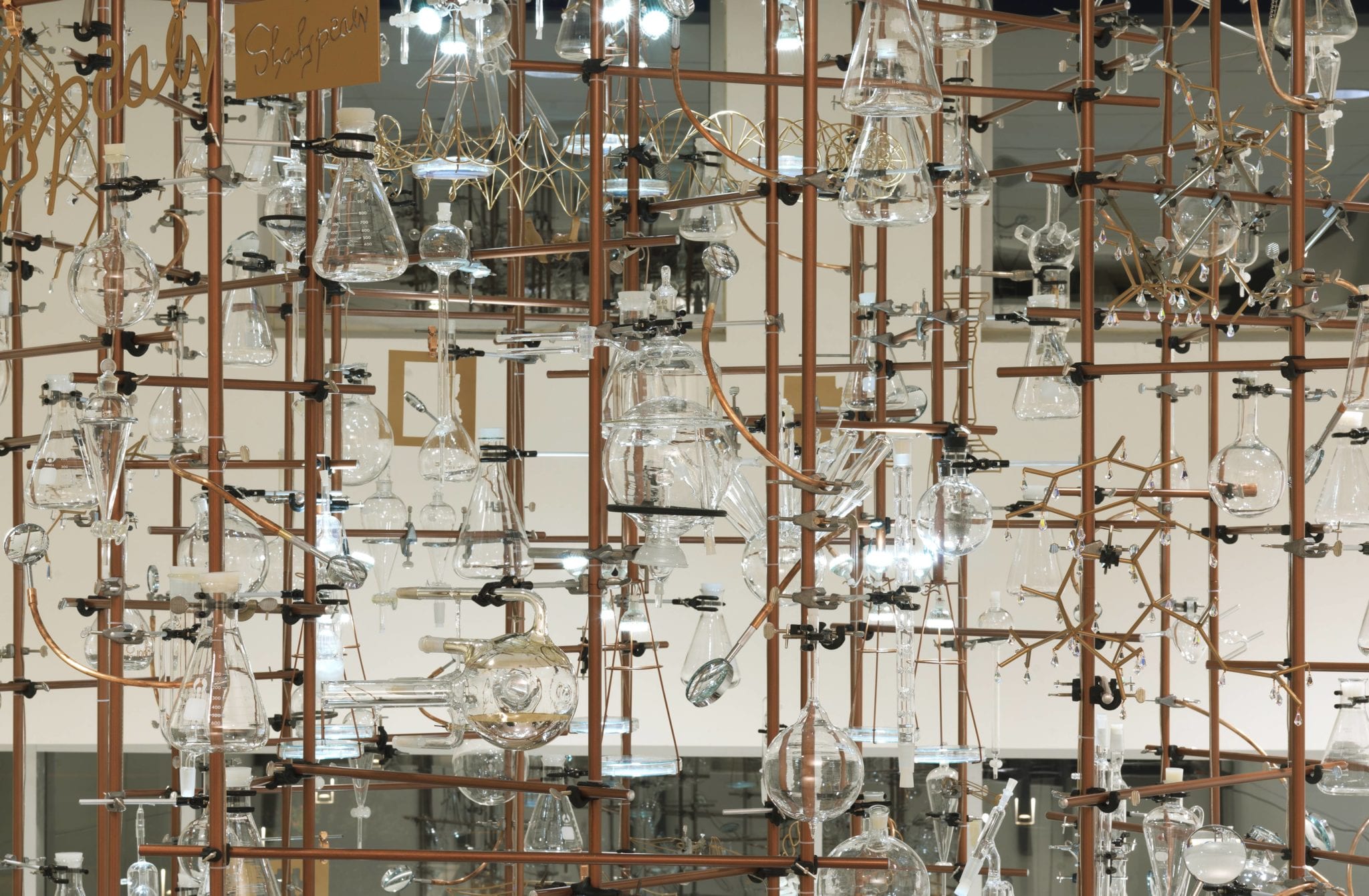
Pattern Recognition, a sculpture for the Phoenix Police Crime Lab, is a surrealistic chandelier that pays homage to the art of forensic science.
Held together by an anarchic armature of steel rods and laboratory clamps, the artwork contains hundreds of glass beakers, flasks, test tubes, pipettes and other tools of the forensics trade. Nested within this array of real-life equipment are scores of artist-made forms, among them molecular models of drugs, fingerprints, DNA strands, implausible conflations of lab glass, pop cultural references to police work, and over 130 magnifying glasses.
Approximately 10 feet in diameter and18 feet high, the piece is suspended from the lobby ceiling by forty posts at the bases of which are backlit Petri dishes holding graphic references to the lab’s investigative specialties, as well as additional LED’s.
The work’s title, Pattern Recognition, describes a common and recurrent theme in scientific investigation. As the title suggests, the artwork itself is a mystery to solve. Seen from the side and from an adjacent balcony, it appears to be a chaotic array of unrelated parts. Alternatively, when seen from below, the overhead cluster of colors, forms and lights falls into a clear concentric pattern of imagery depicting the clues that forensic scientists encounter in the course of cracking criminal cases.
The dynamic between frenzied and orderly viewpoints serves as an esthetic metaphor for the lab’s mission, where in the applied study of human pathology specialists share expertise in the course of solving a crime.
Pattern Recognition is a collaboration with Stu Schechter.
Pattern Recognition was fabricated by Bob’s Welding and Fabrication, Central Falls, RI.
2007
10’ diameter
17.5’ h
